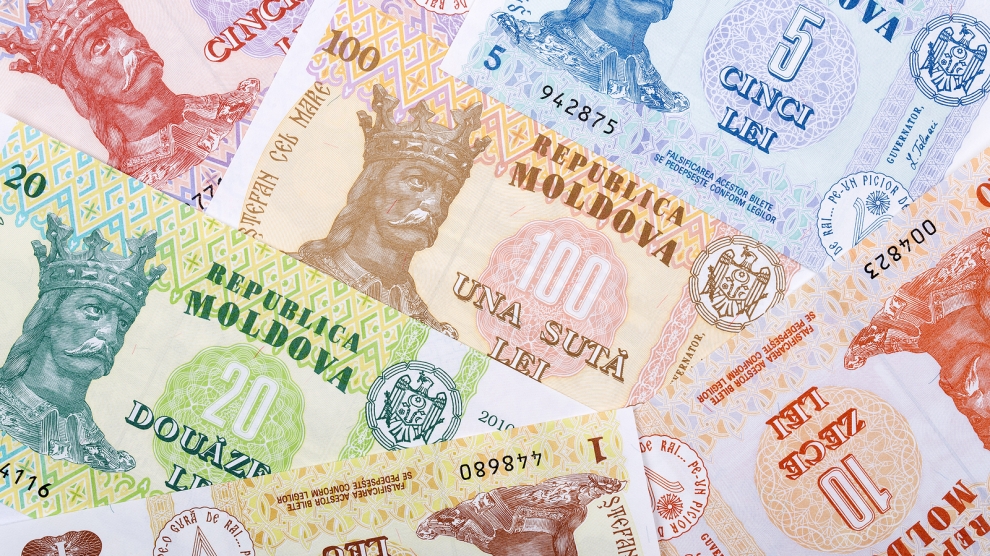The Moldovan leu turns 25 on November 29. This is no mean feat for a young currency which has so far had to exist in a very challenging geo-political context.
The bold decision to introduce the new currency was taken on November 29, 1993, to replace the Soviet rouble and Moldovan coupons. With the support of the International Monetary Fund (IMF), Moldova put in circulation the Moldovan leu. Moldova barely had any foreign currency reserves and had no gold holdings whatsoever at the time. The starting point of “no foreign debt” was a major positive factor, but the lack of any gold has haunted the currency throughout its first quarter of a century.
Based on the good results in the implementation of reforms, the leu managed to remain stable in the first five years of circulation at around at 4.50 lei/USD. Its initial exchange rate was established administratively by the National Bank of Moldova (NBM) at 3.85 lei/USD. However, more dramatic developments were to follow in coming years. First, a very steep depreciation followed the 1998 financial crisis. The second was to follow in 2014 (see graph) when the currency sharply depreciated again. During 2015-16, the level of 22 lei/EUR was frequently exceeded. This showed the fragility of a young currency unable to weather the extreme conditions derived from scandals, fraud and a struggling economy. However, an incipient and fragile appreciation trend has been seen in the second half of 2017 and in 2018, as Moldova follows a new IMF programme. A strong economic recovery is now required to bring the currency stability.
The economic potential of this country back in 1993 was good if compared to its geographic and human dimensions, but it has not been used to the highest level. Over the last 25 years, foreign debt has built up to a staggering level of 7.2 billion US dollars as of end-March 2018 (some 100 per cent of GDP). Strong control of foreign debt should be a priority for the current Moldovan authorities. An adequate restructuring of the debt is also desirable, but realistically Moldova is not in the position to negotiate with its creditors. It simply has not got enough borrowing capacity to be able to diversify the sources of its external financing. Moldova has been and will continue to be externally vulnerable because of its almost total dependence on energy imports from the Russian Federation and other CIS countries. Chronic trade deficits have also been accumulated over years. This has made Moldova a Heavily Indebted Country.
One positive factor concerning the leu’s exchange rate has been remittances. Over the last 10 years, Moldova received an average of 1.3-1.4 billion US dollars on an annual basis from its almost one million citizens currently living and working abroad. In some years, this represented up to 20 per cent of the Moldovan GDP. However, the large majority of this money is being spent on consumption/subsistence, which is not ideal. However, these large transfers have considerably helped the leu to stay afloat so far. If the total level of remittances will decline (as seems likely), the depreciation of the leu will be the most predictable result.
Internal developments have also put heavy pressure on the leu over the last few years. The supervision of the Nation Bank of Moldova up to the end of March 2016 was weak. The banking sector was plagued by severe scandals, of which the so-called ‘Moldovan laundromat’, when some 22 billion US dollars of Russian money was washed through Moldovan banks, and the huge one billion US dollar banking fraud were the most damaging. Many judges and bailiffs involved were arrested and many managers of the banks involved (and from the NBM) were fired and/or arrested or had their banking administrator licences revoked. However, this was too little, too late. The damage was done and the Moldovan leu suffered. A new governor was appointed by the Moldovan parliament effective from April 2016. Measures to correct this unacceptable situation started to be implemented, but for a total cure there may be a long wait.
Fighting corruption in Moldova is sometimes more of a national show for which the mass media creates an audience. The actual results are modest, if any. Almost nothing was recovered from the banking fraud to date. There is a need for a strong political will to fight corruption. This is obviously lacking in Moldova. Measures to correct the situation should be implemented now. For happier returns in the second quarter of the century, the destiny of the young Moldovan leu – and in a way of the country itself – require a favourable geopolitical context, a manageable level of its foreign debt, a strong economy and eradication of political corruption. However, all four conditions are and will continue to be very challenging indeed.
—
The views expressed in this opinion editorial are those of the authors and do not necessarily represent those of the European Commission or Emerging Europe’s editorial policy.






Add Comment